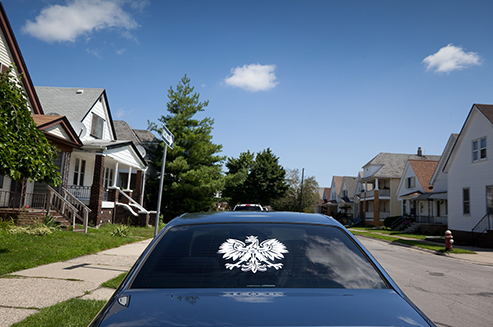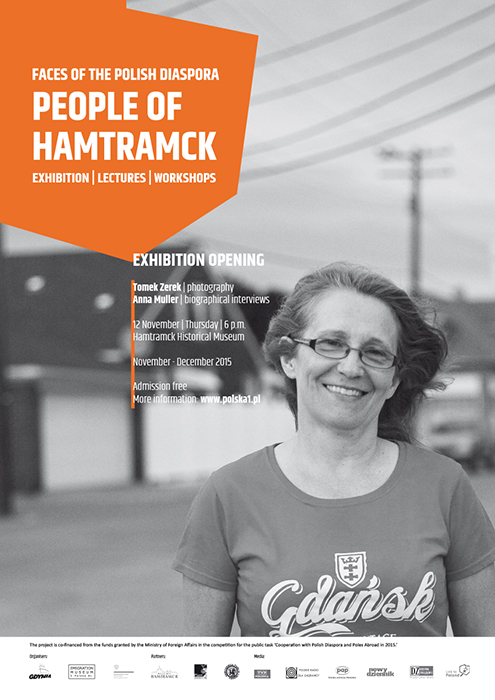Gdynia, a Polish port city, has acquired the first museum in the country devoted to the history of Polish emigration. It has been located in the heart of the seaport, in the restored historic building of the Marine Station, which for decades served as a departure point for Polish ocean liners, bound, amongst other destinations, for America. The Emigration Museum tells the story of Polish emigration from the 19th century until the present day. It does so not only with the help of one the most modern permanent multimedia exhibitions in Poland but also through a rich programme of cultural, research and educational activities. One such activity will be presented in November in the state of Michigan, in the town of Hamtramck, whose migration story calls for a wider presentation in both Poland and America.
This small town is a melting pot of nationalities, cultures and traditions. It is also a unique enclave of Polish Americans, where for decades people of Polish origin made up the majority of residents and where they have been actively involved in the town’s cultural, political and social life. Polish emigrants in the early 20th century had a special role in turning the farming village populated mainly by German settlers into a thriving industrial town within a mere ten years (1910-1920). So dynamic a change was propelled by the establishment of the Dodge Brothers Motor Car Company Plant, where the majority of workers came from Poland. For years Hamtramck served as a perfect example of Polish-American culture. Even in the 1970s, 9 out of 10 residents of the town were Polish, while today the nearly 3.5 thousand people of Polish origin make up a mere 14.5 percent of the town’s population. New ethnic groups are appearing in their place, mostly from Arab countries. Located near Detroit, Hamtramck found itself amidst the social and economic change which affected the legendary Motor City, where the collapse of the motor industry became the symbol of the end of the American Dream. Despite the economic and demographic change, Polish traditions are still alive, with streets bearing familiar-sounding names and the town interspersed with Polish churches, shop signs or monuments.
It was this special character of Hamtramck which provided inspiration for the Emigration Museum project – “Faces of the Polish Diaspora: People of Hamtramck”, made up of a series of 30 biographical interviews with people of Polish origin and a collection of artistic snapshots of the town and its residents. The research for the Emigration Museum was conducted by Dr Anna Muller from the University of Michigan-Dearborn and the photographs were taken by the Polish photographer Tomek Zerek.
The photos, enriched with the interviews, make up the exhibition which tells the story of contemporary Hamtramck and poses questions as to the dynamics of the Polish identity and the expansion of Arab culture in this provincial, yet multicultural town: Hamtramck has something of the jewellery box about it, because, when we get out of the car, doors open up which lead us to unseen living spaces, people and cultures – fragments of worlds brought over in suitcases, heads and hearts. Hamtramck claims that it is one of the five most diverse societies on Earth. I don’t know if that’s true but there are umpteen nationalities here and several religions, says photographer Tomek Zerek.
His colleague, researcher Dr Anna Muller sums up her work on the project: A lot of surprises. The history of this city is incredibly rich. Several times a day I would be working out chapters for a potential book in my head. This diaspora is completely different, different to the one in Chicago, for instance. Hamtramck community was built by workers, and was a very poor, badly educated community, but one which led to the formation of trades unions in the region. In other words, it built relations between workers and management and affected the face of American capitalism in a place where it was undergoing intense development.
The opening of the exhibition “Faces of the Polish Diaspora: People of Hamtramck” will be held on 12 November at 6 p.m. at the Hamtramck Historical Museum. Photos and statements by the town’s residents tell a whole variety of emigration stories, those of economic emigrants, war veterans or Solidarity emigrants. The interviews also reveal changes in Polish identity as experienced by second- and third-generation Poles who often cannot speak Polish any more. Through the lens of their stories we learn of the small Polish community which faces the same challenges which might be experienced by Polish emigrants anywhere else in the world. The exhibition has an additional value, worthy of note in that Hamtramck presents an interesting blend of Polish-Catholic influences and the cultures of the East and the South. The ethnic make-up of the town is undergoing change, with Polishness gradually giving way to Arab culture and Islam. It was this theme of the great social change which especially preoccupied the photographer Tomek Zerek, the exhibition’s originator. His photographs portray a town full of inspiring contrasts, grass-roots social initiatives and creative activities which bring the residents together.
The exhibition will be accompanied by a rich programme of events held in the Public Library and the Hamtramck Historical Museum. The programme includes history lectures, workshops on creating home archives of oral history, family workshops and a presentation by photographer Tomek Zerek of the photos of the town and its family stories gathered by the young residents of Hamtramck. The full programme will be posted on our internet site very soon.
The organiser of the project is the City of Gdynia in partnership with the Emigration Museum in Gdynia. The project has been partially financed from funds by the Ministry of Foreign Affairs of the Republic of Poland. American partners of the project are the PIAST Institute, Hamtramck Public Library and Hamtramck Historical Museum.
More information on: Emigration Museum in Gdynia | Hamtramck Public Library
Photo © Tomasz Zerek



